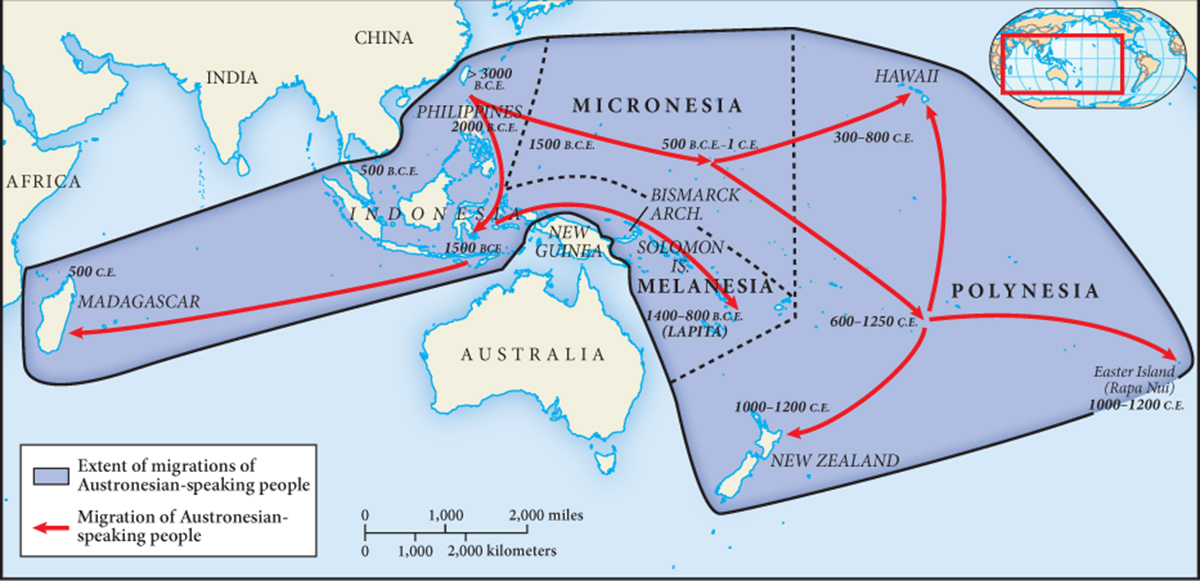Into the Pacific
The last phase of the great human migration to the ends of the earth took place in the Pacific Ocean and was distinctive in many ways. In the first place, it occurred quite recently, jumping off only about 3,500 years ago from the Bismarck and Solomon Islands near New Guinea as well as from the islands of the Philippines. It was everywhere a waterborne migration, making use of oceangoing canoes and remarkable navigational skills, and it happened very quickly and over a huge area of the planet. Speaking Austronesian languages that trace back to southern China, these oceanic voyagers had settled every habitable piece of land in the Pacific basin within about 2,500 years. Other Austronesians had sailed west from Indonesia across the Indian Ocean to settle the island of Madagascar off the coast of eastern Africa. This extraordinary process of expansion made the Austronesian family of languages the most geographically widespread in the world and Austronesian trading networks, reaching some 5,000 miles from western Indonesia to the mid-

Comparison
How did Austronesian migrations differ from other early patterns of human movement?
In contrast with all of the other initial migrations, these Pacific voyages were undertaken by agricultural people who carried both domesticated plants and animals in their canoes. Both men and women made these journeys, suggesting a deliberate intention to colonize new lands. Virtually everywhere they went, two developments followed. One was the creation of highly stratified societies or chiefdoms, of which ancient Hawaiian society is a prime example. In Hawaii, an elite class of chiefs with political and military power ruled over a mass of commoners. The other development involved a profound ecological impact of this initial intrusion into a pristine environment: extensive deforestation and the quick extinction of many species of animals, especially large flightless birds such as the moa of New Zealand, which largely vanished within a century of human arrival. (See “Pacific Oceania: Peoples of the Sea” in Chapter 6 for more on the historical development of Pacific Oceania.)